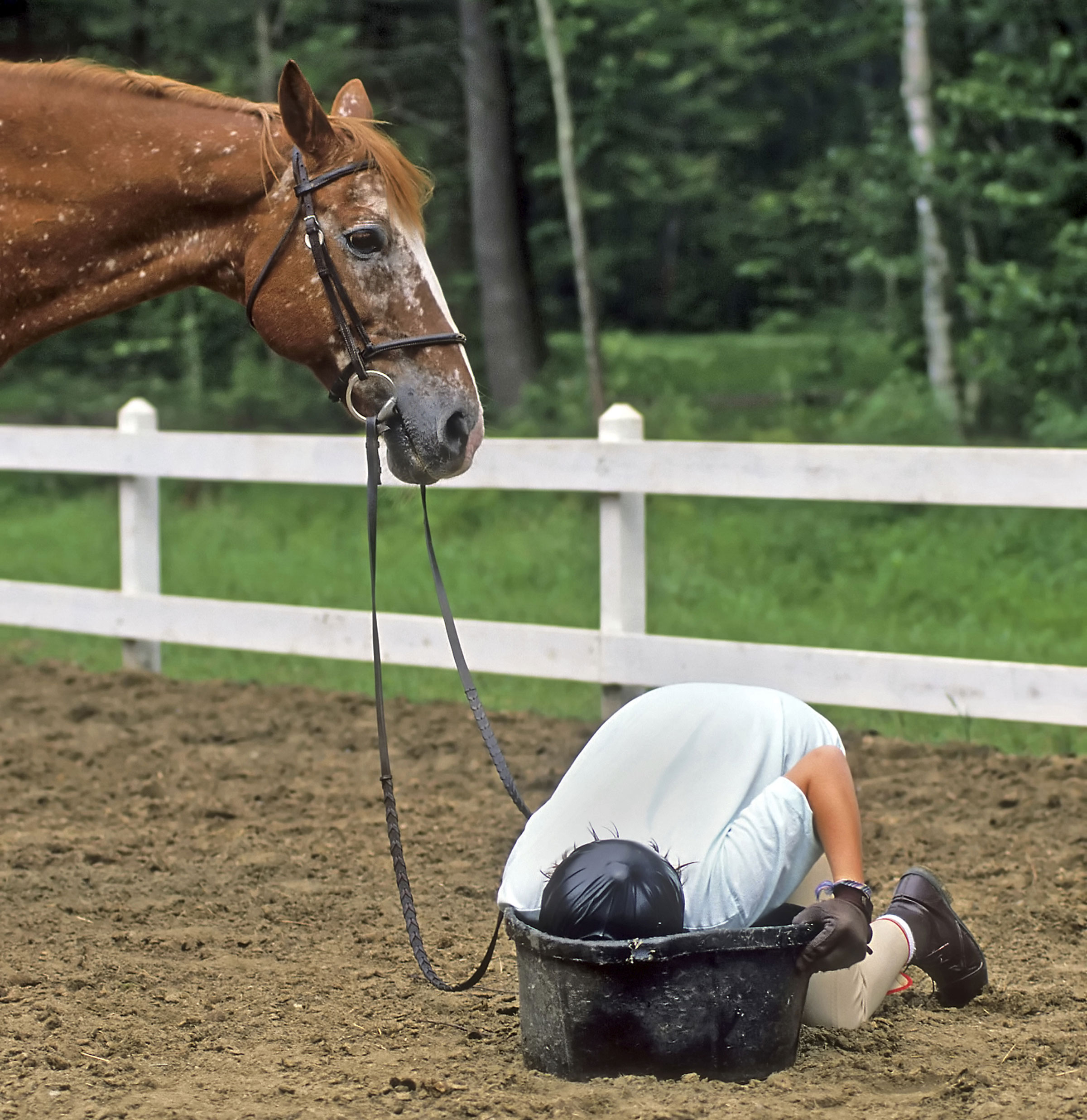
If you are still riding or driving your horse, or using him in competition or for trail riding or giving lessons, you want him to stay fit and sound.
“Keeping these older horses active is better than trying to get a horse back in shape after a period of nonuse,” said Tia Nelson, DVM, who also owns horses near Helena, Montana. “It’s just like people. If you stay in good condition, you are better off than if you don’t exercise regularly. It’s painful to get back in shape again! Keeping the horse fit is very important.”
Steady exercise is best, without a lot of time off or periods of extreme exertion. “No weekend warrior stuff!” Nelson emphasized. “Exercise, especially if it is sporadic, can be hard on the older horse.”
Keep an eye on how the saddle fits an older horse to make sure it’s not rubbing on certain areas that were never a problem in his younger years. You might need extra pads or special pads to protect the horse’s more-prominent backbone as he ages.
Feet and legs are always important for the active older horse, and this includes hoof care. Regular hoof care should be routine for every horse, but if the older horse has any hoof problems, those will need to be addressed to keep him sound and able to do his job. He might need special shoeing if he has an old hoof crack or suffers from arthritis or navicular syndrome.
“I would not hesitate to keep using a horse; to continue letting him do the jobs he has been doing (being ridden or driven) and the things he has been conditioned for,” said Nelson. “But if you are going to start using that horse more, you need to take the extra time to gradually get him legged up without overdoing it.”
Since his old joints and muscles might be a bit stiff in the mornings, always take time to warm him up gradually before you begin a day of riding or competition. The increased blood circulation will loosen up his muscles and joints, and he will move freer and more comfortably and be less apt to suffer exercise-related injuries. It takes a little more time to get the blood circulating properly and get the joints warmed and limbered up to where they are less-apt to be injured during athletic work.
Careful cool-out is also important after a long ride, performance event or workout. If he is completely cooled out before you put him away, the older horse is less apt to break out in a second sweat or have stiff joints and muscles the next day.


